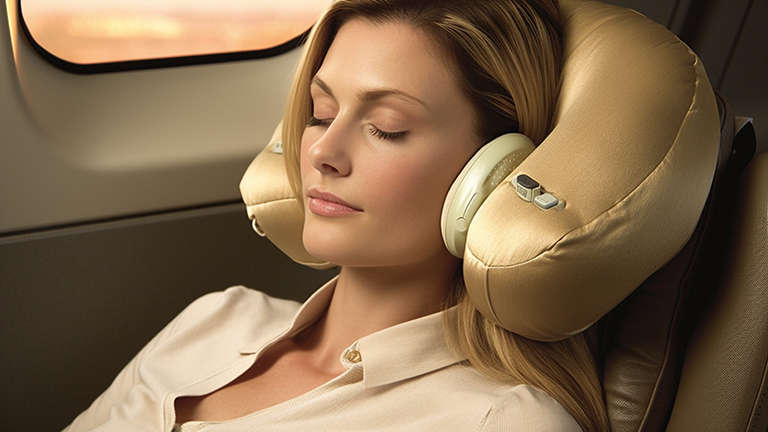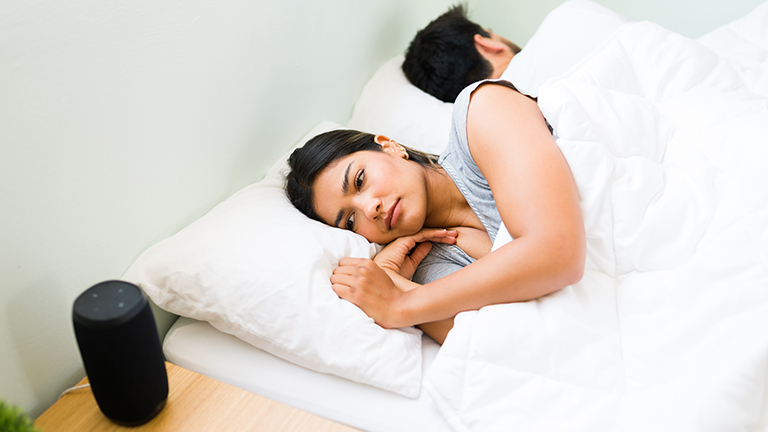Sleep is one of the most essential pillars of health, yet millions of people worldwide struggle with conditions that prevent them from getting restorative rest. Among the most common and dangerous sleep disorders is sleep apnea, a condition characterised by repeated interruptions in breathing during sleep. For those affected, a CPAP machine for sleep apnea can be life-changing. This article dives deep into CPAP therapy, exploring its benefits, types, usage tips, and much more, providing a definitive guide for anyone considering or currently using CPAP therapy.
What is Sleep Apnea and How It Affects Your Health
Sleep apnea is a serious disorder in which breathing repeatedly stops and starts during sleep. There are two main types:
- Obstructive Sleep Apnea (OSA): Caused by the relaxation of throat muscles, leading to airway blockage.
- Central Sleep Apnea (CSA): Caused by the brain failing to send proper signals to the muscles that control breathing.
Symptoms of Sleep Apnea
Sleep apnea can manifest in various ways, including:
- Loud snoring
- Gasping or choking during sleep
- Excessive daytime sleepiness
- Morning headaches
- Difficulty concentrating
- Mood changes, such as irritability or depression
If left untreated, sleep apnea can lead to severe health issues like high blood pressure, heart disease, stroke, and diabetes, making proper treatment essential.
How a CPAP Machine Works to Treat Sleep Apnea
CPAP (Continuous Positive Airway Pressure) machines are considered the gold standard for sleep apnea treatment. These devices deliver a constant flow of air through a mask to keep the airway open during sleep. Here’s how they work:
- Air Pressure Regulation: The machine pumps air at a prescribed pressure that prevents airway collapse.
- Mask Delivery: CPAP masks come in various forms (nasal, full-face, or nasal pillows) to deliver the air efficiently.
- Improved Sleep Quality: By maintaining open airways, CPAP therapy reduces snoring, oxygen desaturation, and sleep interruptions.
With proper use, CPAP machines can significantly improve sleep quality, daytime alertness, and overall health.
Benefits of Using a CPAP Machine for Sleep Apnea
The benefits of CPAP therapy go far beyond just reducing snoring:
- Improved Sleep Quality: Users experience fewer awakenings and longer deep sleep cycles.
- Reduced Risk of Heart Problems: CPAP helps maintain stable oxygen levels, reducing cardiovascular risks.
- Better Daytime Alertness: Patients often report improved energy levels and concentration.
- Enhanced Mood and Mental Health: By improving sleep, CPAP therapy can reduce anxiety, depression, and irritability.
- Prevention of Long-Term Complications: Consistent CPAP use can lower the risk of stroke, heart attack, and diabetes-related complications.
Types of CPAP Machines and Masks
Understanding the different types of CPAP machines is crucial for choosing the right device:
[INSERT_ELEMENTOR id=”5108″]
CPAP Machine Types
- Standard CPAP Machines: Deliver a constant, fixed air pressure.
- Auto-CPAP (APAP) Machines: Adjust air pressure automatically based on breathing patterns.
- Bi-level CPAP (BiPAP) Machines: Provide two pressure levels: higher for inhalation, lower for exhalation.
CPAP Mask Types
- Nasal Masks: Cover the nose, suitable for patients who move during sleep.
- Full-Face Masks: Cover both nose and mouth, ideal for mouth breathers.
- Nasal Pillow Masks: Lightweight and minimalist, deliver air directly into the nostrils.
Choosing the right combination of machine and mask is key to comfort and effective therapy.
How to Choose the Right CPAP Machine for You
Selecting a CPAP machine involves several considerations:
- Severity of Sleep Apnea: Consult your doctor to determine the right pressure and type.
- Comfort and Fit: Proper mask fit is essential to prevent leaks and ensure comfort.
- Noise Levels: Modern CPAP machines are quieter, but noise-sensitive users should check decibel levels.
- Travel Considerations: Compact and battery-operated machines are ideal for frequent travelers.
- Insurance Coverage: Some insurance plans cover CPAP machines, reducing out-of-pocket costs.
CPAP Therapy: What to Expect in the First Few Weeks
Starting CPAP therapy may require an adjustment period. Here’s what to expect:
- Initial Discomfort: Some users experience mask irritation or nasal dryness.
- Gradual Adaptation: Gradually increasing nightly usage helps in adapting to therapy.
- Tracking Progress: Many machines track usage, mask fit, and apnea events to monitor effectiveness.
- Consultation: Follow-ups with your doctor or sleep specialist are important for adjusting pressure settings and addressing side effects.
Consistency is key to maximising benefits.
Common CPAP Machine Side Effects and How to Manage Them
Some users may experience minor side effects, including:
- Dry Nose or Throat: Use a humidifier attachment or saline sprays.
- Mask Leaks: Adjust straps or try a different mask style.
- Skin Irritation: Apply barrier creams or consider a different mask cushion.
- Claustrophobia or Anxiety: Start therapy gradually, using the mask while awake to acclimate.
Most side effects are manageable with proper guidance and equipment adjustments.
Tips for Adjusting to CPAP Therapy
Adapting to CPAP therapy can be smoother with the following strategies:
- Consistency: Use the machine every night, even during naps.
- Mask Comfort: Experiment with mask types, padding, and strap adjustments.
- Cleaning Routine: Clean mask, tubing, and water chamber regularly to prevent infections.
- Humidification: Adjust humidity levels to reduce dryness and irritation.
- Positive Mindset: Remind yourself of the long-term health benefits to stay motivated.
CPAP Machine Maintenance and Cleaning Guide
Proper maintenance ensures your CPAP machine works effectively and lasts longer:
- Daily: Rinse mask and water chamber with warm, soapy water.
- Weekly: Wash tubing and headgear; let them air dry completely.
- Monthly: Check filters and replace as needed.
- Annual Maintenance: Have the machine inspected by a professional if needed.
Keeping your CPAP clean helps prevent respiratory infections and prolongs device lifespan.
Travel-Friendly CPAP Machines
Travelling with sleep apnea requires planning:
- Portable CPAP Machines: Compact, lightweight, and battery-compatible.
- Travel Masks: Smaller masks designed for convenience.
- Power Options: Consider rechargeable batteries, international adaptors, and airline approval for device use.
- Carrying Case: Protects the machine during transit.
Travel-friendly CPAP devices allow continuous therapy, even on the go.
CPAP Machine Reviews: Top Picks for 2025
Here are some of the highly recommended CPAP machines for 2025:
- ResMed AirSense 10: Auto-adjusting pressure, quiet operation, built-in humidifier.
- Philips DreamStation Auto CPAP: Compact design, user-friendly interface, advanced tracking features.
- Fisher & Paykel Icon Auto CPAP: Sleek, travel-friendly, customise able humidification.
- ResMed AirMini: Ultra-portable, ideal for travellers, compatible with most CPAP masks.
Always consult your sleep specialist before purchasing, as machine suitability depends on your specific condition.
Top CPAP Machines for 2025: Specs, Pros, and Cons
| CPAP Machine | Type | Pressure Range | Noise Level | Key Features | Pros | Cons |
| ResMed AirSense 10 AutoSet | Auto CPAP | 4–20 cm H₂O | 26 dB | Built-in humidifier, automatic pressure adjustment, sleep tracking | Quiet, user-friendly, effective for all OSA severities | Slightly bulky, higher price |
| Philips DreamStation Auto CPAP | Auto CPAP | 4–20 cm H₂O | 28 dB | Touchscreen, cloud connectivity, advanced tracking | Easy-to-use interface, lightweight, stylish design | Some users report mask compatibility issues |
| Fisher & Paykel Icon Auto CPAP | Auto CPAP | 4–20 cm H₂O | 25 dB | Integrated humidification, heated tube optional | Smooth airflow, minimal condensation, portable | Heated tube adds to bulk |
| ResMed AirMini | Travel CPAP | 4–20 cm H₂O | 30 dB | Ultra-compact, smartphone app control, waterless humidification | Extremely portable, app-controlled, compatible with multiple masks | Limited humidification options, higher cost |
| DeVilbiss IntelliPAP AutoAdjust | Auto CPAP | 4–20 cm H₂O | 27 dB | Auto-adjust, ramp feature, built-in data tracking | Reliable, durable, effective | Less sleek design, larger footprint |
| Somnetics Transcend Auto CPAP | Travel CPAP | 4–20 cm H₂O | 28 dB | Compact, battery-compatible, optional humidifier | Ideal for travelers, lightweight | Humidification requires separate accessory |
| ResMed AirSense 10 Elite | CPAP | 4–20 cm H₂O | 26 dB | Fixed pressure, humidifier, data tracking | Simple, reliable, easy maintenance | Lacks auto-adjust for changing pressure needs |
Tips for Choosing the Right CPAP Machine
- Consider Your Lifestyle: Travellers may prefer compact machines like the AirMini or Transcend.
- Mask Compatibility: Ensure the machine supports your preferred mask type.
- Noise Sensitivity: Look for machines under 30 dB for minimal sleep disruption.
- Humidification Needs: Heated humidifiers improve comfort for dry air conditions.
- Budget and Insurance: Evaluate cost vs. features and check insurance coverage.
Frequently Asked Questions About CPAP Machines
Q1: Can CPAP therapy cure sleep apnea?
No, CPAP therapy manages symptoms and prevents complications but does not cure the underlying condition.
Q2: How long should I use my CPAP each night?
For maximum benefit, use the CPAP machine every night for the entire sleep duration.
Q3: Can I use CPAP if I have a cold or congestion?
Yes, but using a heated humidifier or saline nasal spray can help ease discomfort.
Q4: How often should I replace my CPAP mask or machine?
Masks and cushions typically last 3–6 months, tubing 6–12 months, and machines 3–5 years.
Q5: Are there alternatives to CPAP therapy?
Yes, options include oral appliances, lifestyle changes, positional therapy, and in some cases, surgery. Consult your doctor for guidance.
Conclusion: CPAP Machine for Sleep Apnea
A CPAP machine for sleep apnea is a proven, effective solution for improving sleep quality and overall health. By understanding the types of machines, proper usage, maintenance, and adaptation strategies, individuals can significantly reduce the health risks associated with untreated sleep apnea. Whether you are newly diagnosed or seeking to optimize your therapy, this guide provides the knowledge and tools needed for success.
Investing in a CPAP machine is more than a medical decision—it’s an investment in your long-term health, daytime alertness, and quality of life.


